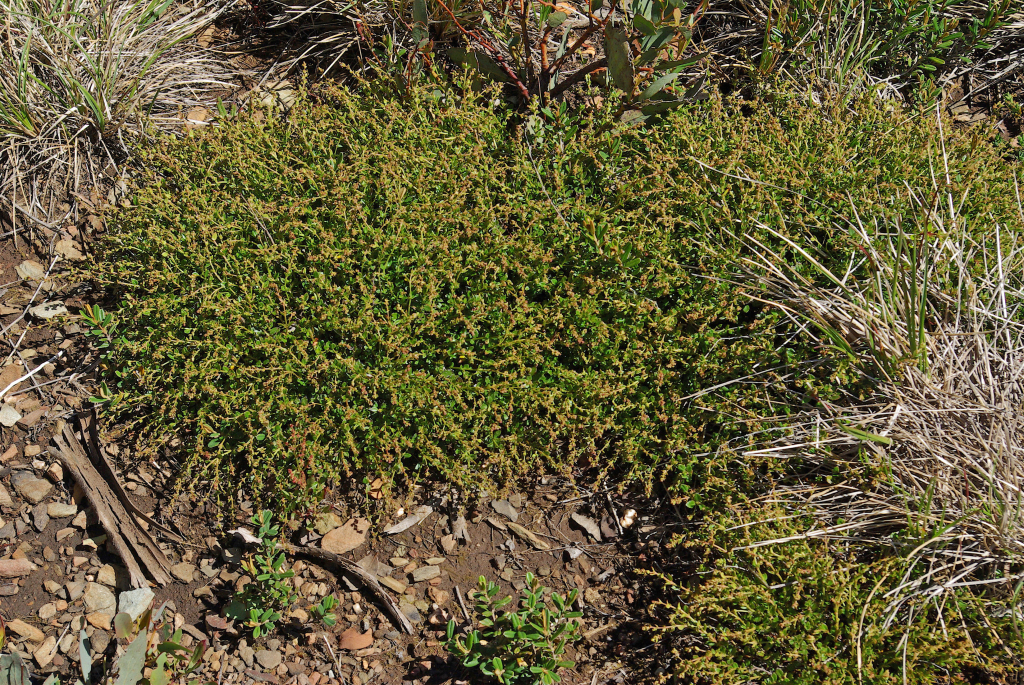Gonocarpus micranthus subsp. micranthus
Creeping RaspwortProstrate or ascending herb, 5–10 cm tall; stems rooting at nodes, often forming mats. Leaves ovate, lanceolate-ovate to cordate, 3–7(–12) mm long. Inflorescence unbranched or branched to the second order and then all branches ± erect. Flowers Oct.–Feb.
GleP, VVP, VRiv, GipP, OtP, WaP, CVU, GGr, DunT, NIS, EGL, EGU, WPro, HSF, HNF, OtR, Strz, MonT, VAlp. Also SA, Qld, NSW, ACT, Tas. Widespread in Victoria, mostly on wet, peaty soils.
Gonocarpus micranthus subsp. ramosissimus is distinguished from subsp. micranthus by its erect (to 60 cm) habit, and larger, diffuse inflorescence with third- or fourth-order branching. However, subsp. micrantha often becomes large and robust, with quite diffuse inflorescences following disturbances such as fire. These specimens can be quite difficult to distinguish from subsp. ramosissimus, but generally remain much lower, with stems initally prostrate and rooting for several nodes, and becoming ascending rather than erect.
Jeanes, J.A. (1996). Haloragaceae. In: Walsh, N.G.; Entwisle, T.J., Flora of Victoria Vol. 3, Dicotyledons Winteraceae to Myrtaceae, pp. 887–908. Inkata Press, Melbourne.
 Spinning
Spinning



